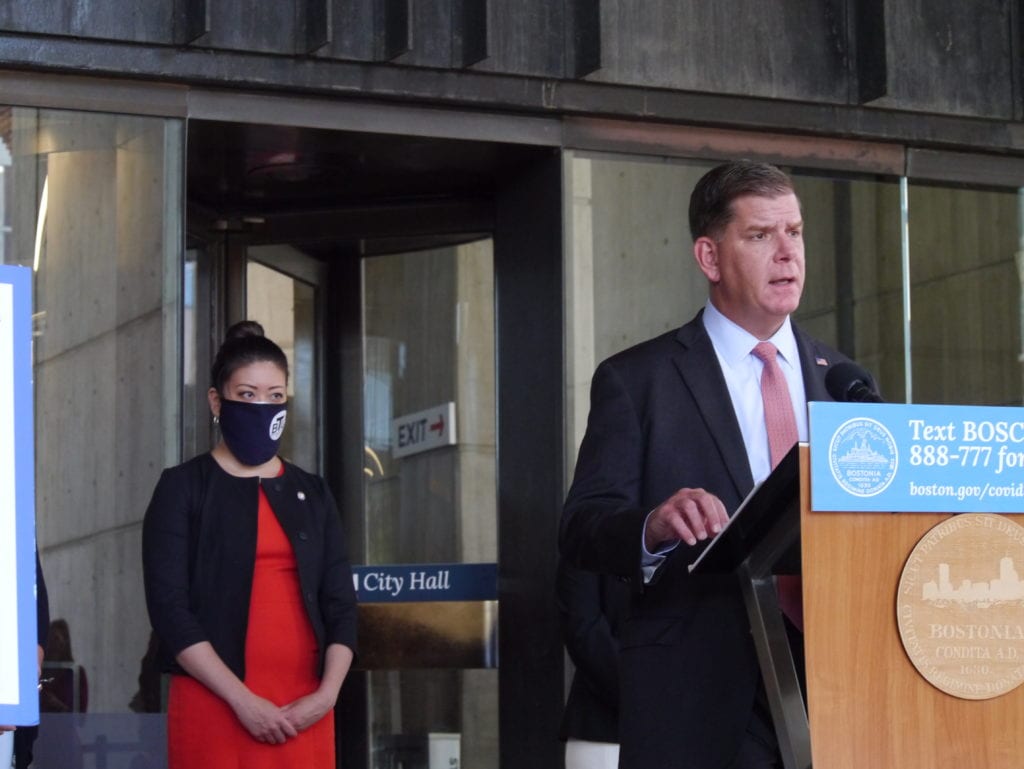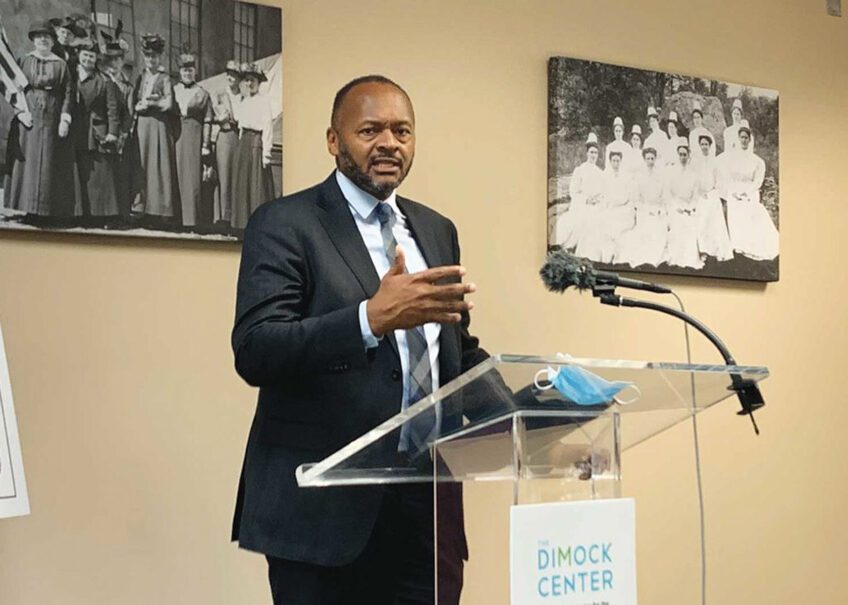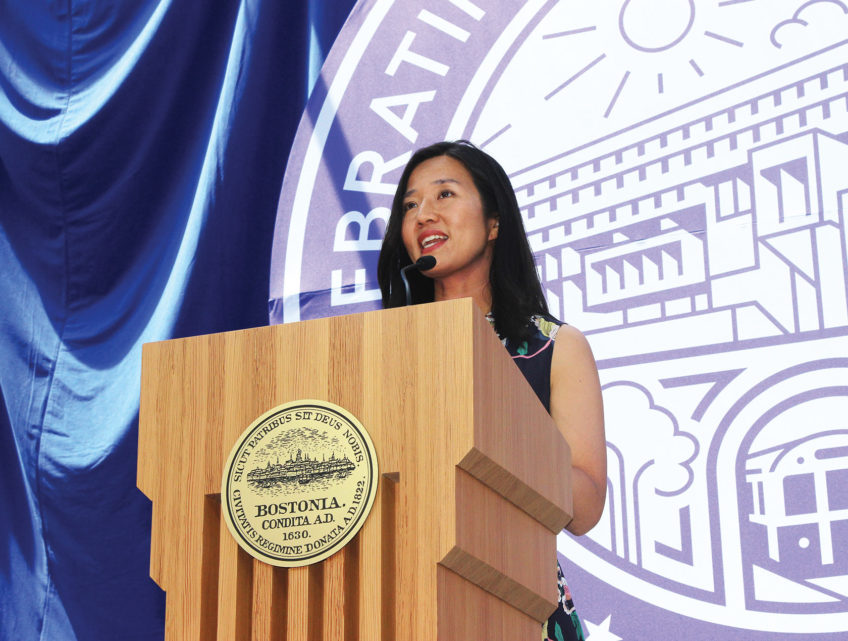
Boston Public Schools students will begin the year remotely, Mayor Martin Walsh announced last Friday, with a phased-in return to in-school instruction that will be contingent on the city’s rate of COVID infections remaining below 4% of those tested.
“This plan was developed with the input of families, educators and public health experts, and every step will follow science and public health data,” Walsh said.
The announcement came after weeks of advocacy by Boston Teachers Union activists and several city councilors calling on the city to delay sending students back to classrooms, with many citing as concerns inadequate HVAC systems, lack of ventilation in classrooms and lack of access to COVID testing.
During Friday’s announcement, Walsh appeared with BPS Superintendent Brenda Cassellius, Boston Teachers Union President Jessica Tang and Boston School Committee Vice Chair Alexandra Oliver-Davila.
Tang called the plan “a step in the right direction.”
“We are all committed to figuring out how to put health and safety at the center of all decisions and make sure that all details are being considered so that we can have the safest plan possible,” she said. “We still have a lot of details to work out and a lot of questions that need to be answered. But we are working together to try to figure out the best way possible.”
The plan unveiled by Walsh would phase in in-school instruction over months, beginning Oct. 1 with high-needs students who require close supervision from teachers. In the next phase, pre-kindergarten and K1 and K2 would begin in-school instruction on Oct. 15. Grades 1-3 would begin on Oct. 22, grades 4-8 on Nov. 5 and 9-12 on Nov. 16.
Students from pre-K through high school would divide into two groups under the plan, with the second group beginning four days after the first.
Under the city’s hybrid at-home/in-school plan, students from the first cohort would attend classes on Mondays and Tuesdays, buildings would be cleaned on Wednesdays and students from the second cohort would attend classes on Thursdays and Fridays.
Students will be required to wear masks in school and on BPS school buses. Students will be allowed to remove their masks during lunch, which will be served in their classrooms.
Walsh and Boston Chief of Health and Human Services Marty Martinez said the reopening plan will be contingent on a citywide average of less than 4% of those tested showing COVID infections.
“Science and data is at the forefront of every single plan as we work to gradually and safely reopen the City of Boston,” Martinez said. “By phasing grades in every two weeks, teachers and school staff will have the time they need to get comfortable with the safety of their buildings and classrooms before students arrive and allow us to monitor for any COVID activity between phases.”
Asked whether neighborhoods would be considered individually, Walsh said the city is sticking to the citywide average in its decision-making process for school reopening. In recent weeks, Mattapan, Roxbury, Dorchester and East Boston — the neighborhoods where the majority of BPS students reside — have all posted infection rates higher than 4% of those tested.
But Walsh said the city might consider neighborhood-specific restrictions.
“Everything is on the table,” he said.
Walsh and other political leaders have sought to balance demands from the business community and from some parents to return to in-school instruction with calls for remote learning. Some school districts, including Lawrence and Somerville, have decided on all-remote learning, while others plan to resume in-school instruction in September.
Among Boston parents, greater numbers of Blacks and Latinos are calling for remote instruction than whites. Rates of COVID infection and deaths have been greater in Black and Latino communities than in white communities in Boston and across the country.
At the state level, Education Commissioner Jeffrey Riley issued a memo last week calling on districts using remote learning to require that teachers deliver instruction from their classrooms, rather than from their homes as was the practice during the final months of the last school year.
Mass Teachers Association President Merrie Najimy called that requirement “paternalistic” and said Riley is trying to force teachers back into classrooms without ensuring school buildings can provide safe work environments.
“This new guidance is clearly designed to force local educators’ unions to agree to in-person learning regardless of the condition of the school buildings in their districts, indoor air quality, testing capabilities or area COVID-19 transmission rates,” she said in a statement sent to news media.







